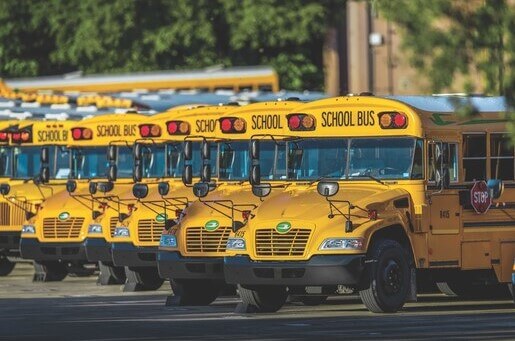In round three of the U.S. Environmental Protection Agency (EPA) Clean School Bus Program funding, more than $6.7 million has been allocated for the purchase of clean propane autogas buses. Fifty-eight districts have been tentatively selected to receive a total of 269 propane autogas buses to replace the nation’s aging, dirty diesel buses.
For every propane autogas bus purchased as part of the Clean School Bus program, the EPA will provide transportation directors with up to $30,000. The program prioritizes high-need local educational agencies, rural and tribal school districts. As a safe, affordable, portable and available energy source, propane is an ideal solution for school transportation. The buses reduce harmful nitrogen oxide (NOx) emissions by 96% compared with diesel, have a range of 400 miles and can continue to operate even if the electric grid is down.
“School districts see the value propane autogas buses can bring to their students, to their community and to the environment,” says David Walters, director of autogas business development for the Propane Education & Research Council. “With the lowest total cost of ownership, reduced emissions and improved uptime, it’s clear that propane autogas buses are an excellent choice. We applaud the districts that have made the decision to prioritize student health and the environment with their new propane autogas buses, and we hope others will follow their lead.”
Through three rounds of funding, the EPA program has allocated more than $2.8 billion for 8,427 electric school buses and 440 low-emissions propane buses. However, for the same amount of money that was distributed for electric buses (about $2.77 billion), the program could have helped fund as many as 92,635 propane buses, assuming each propane bus received the $30,000 incentive.
When considering full lifecycle emissions, replacing 92,635 diesel buses with propane buses would have reduced NOx emissions by 24,664 metric tons over the three years the program has funded buses. By comparison, replacing just 8,427 diesel buses with electric buses will reduce NOx emissions by just 2,379 metric tons over the three years.
“The goal of the program is to reduce emissions as quickly as possible to provide our children with a safe, clean, healthy ride to school,” adds Walters. “According to the Department of Energy, there are more than 450,000 school buses in the United States, and the vast majority run on diesel. By replacing dirty diesel buses with clean propane autogas buses, we can better ensure that more children are riding in a clean school bus.”







